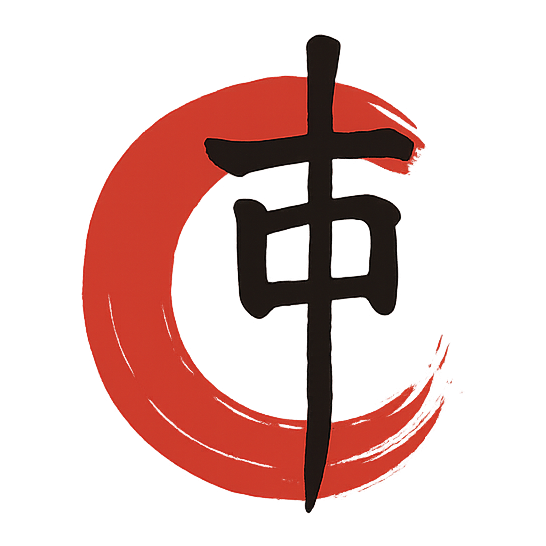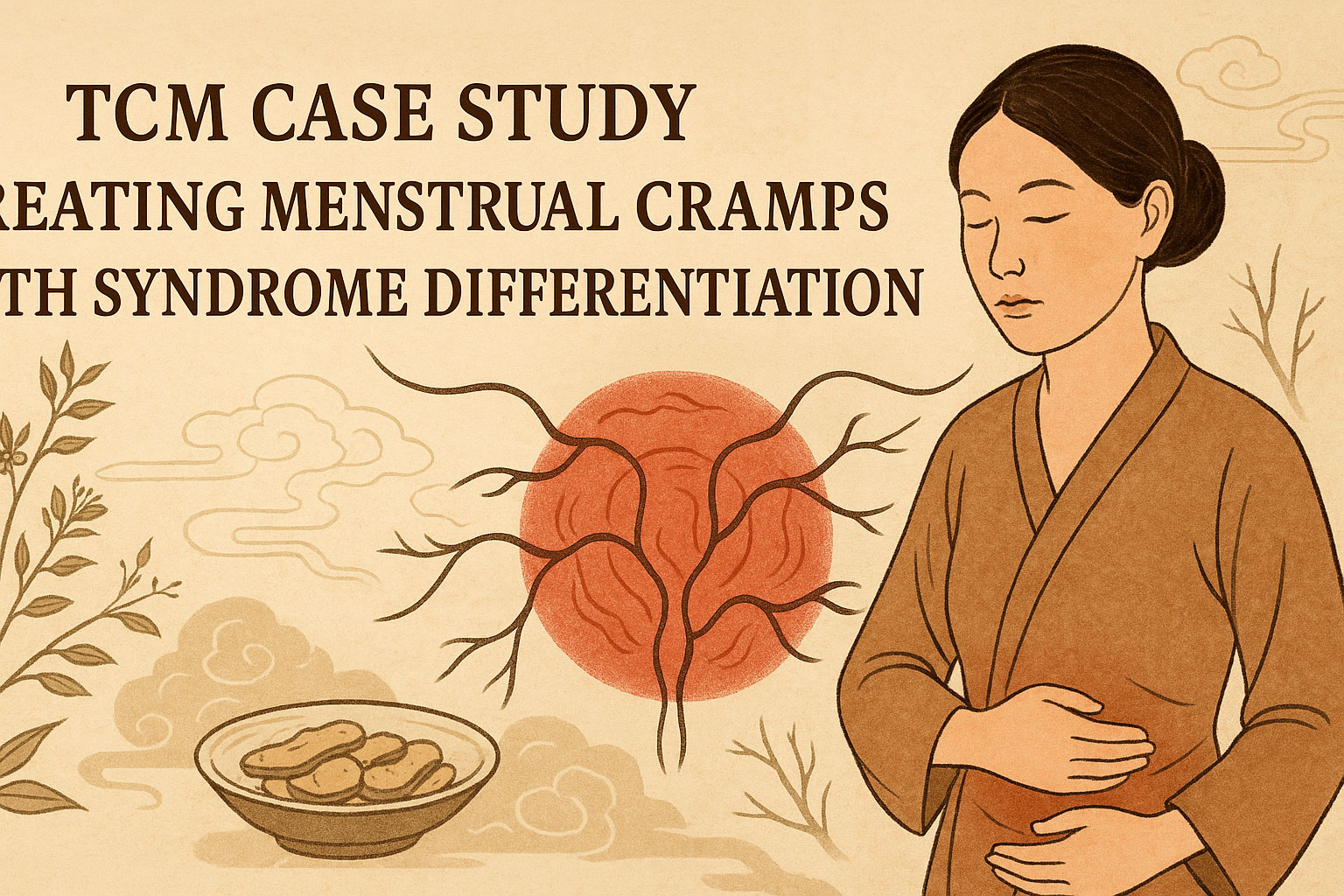Menstrual cramps, or dysmenorrhea (痛经), are a common issue affecting many women. While Western medicine typically uses painkillers or hormonal regulation, Traditional Chinese Medicine (TCM) approaches dysmenorrhea through syndrome differentiation (辨证论治) — identifying the root imbalance before choosing treatment.
In this article, we’ll walk through a realistic case study to show how TCM analyzes and treats menstrual pain with herbal therapy, acupuncture, and lifestyle guidance.
🔶 Patient Case Overview
- Name: Ms. L (28 years old)
- Main complaint: Menstrual cramps for over 3 years
- Timing: Pain starts 1–2 days before menstruation, worse on first day
- Other symptoms:
- Cold hands and feet
- Dull lower abdominal pain relieved by warmth
- Scanty, dark menstrual blood with clots
- Fatigue, loose stools
- Tongue: Pale with thin white coating
- Pulse: Deep and weak, slightly tight
🔶 TCM Diagnosis
Based on the Four Diagnostic Methods (望闻问切), we determine:
- Pattern:
→ Cold accumulation and Blood stasis due to Spleen Qi deficiency - Explanation:
- Spleen deficiency → Poor Blood production and flow
- Cold constricts vessels → Pain and stagnation
- Blood stasis → Clots and dark blood
- Weak Yang and poor circulation → Cold extremities and dull pain
This is a mixed pattern: Deficiency (Spleen Qi) and Excess (Cold & Stasis)
🔶 Treatment Principle
- Warm the meridians and dispel Cold
- Invigorate Blood and eliminate Stasis
- Tonify Spleen Qi and regulate menstruation
🔶 Herbal Formula (Customized)
🔸 Base formula: Wen Jing Tang (Warm the Menses Decoction)
- Wu Zhu Yu (Evodia) – warms Chong & Ren channels
- Dang Gui (Angelica) – nourishes and moves Blood
- Chuan Xiong – moves Qi and Blood
- Bai Shao – softens Liver, relieves pain
- Gan Cao – harmonizes
- E Jiao – nourishes Blood and Yin
- Sheng Jiang, Mai Dong – adjust warmth and fluids
🔸 Modifications:
- Add Huang Qi and Bai Zhu to strengthen Spleen Qi
- Add Yan Hu Suo for stronger analgesic effect
🔶 Acupuncture Plan
- Points:
- SP6 (Sanyinjiao) – Tonifies Spleen, regulates menstruation
- CV4 (Guanyuan) – Warms and strengthens lower abdomen
- LV3 (Taichong) – Moves Liver Qi
- ST36 (Zusanli) – Tonifies Qi
- SP10 (Xuehai) – Invigorates Blood
- Frequency: 2x/week for 3 menstrual cycles
🔶 Lifestyle & Diet Advice
- Avoid raw/cold foods, iced drinks, and overexertion before menstruation
- Drink warming teas with ginger and red dates
- Practice gentle abdominal massage during luteal phase
- Ensure adequate rest and emotional regulation (stress stagnates Liver Qi)
🔶 Results After 3 Months
- Menstrual pain reduced from 7/10 to 2/10
- Blood flow improved: less clotting, brighter color
- Hands and feet warmer, digestion more stable
- Energy and mood improved
🔶 Conclusion
This case demonstrates how TCM tailors treatment based on individual patterns, rather than applying a one-size-fits-all solution. Through herbal medicine, acupuncture, and lifestyle adjustment, TCM offers an integrated, root-focused approach to conditions like dysmenorrhea — not just relief, but restoration of internal harmony.


发表回复